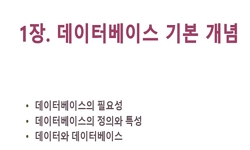스마트시티의 목표는 스마트시티의 요소기술을 통해 도시문제를 해결하여 친환경적이고 지속가능한 경제발전 및 시민의 삶의 질을 향상하는 것이라 할 수 있다. 지금까지 스마트시티는 요...
http://chineseinput.net/에서 pinyin(병음)방식으로 중국어를 변환할 수 있습니다.
변환된 중국어를 복사하여 사용하시면 됩니다.
- 中文 을 입력하시려면 zhongwen을 입력하시고 space를누르시면됩니다.
- 北京 을 입력하시려면 beijing을 입력하시고 space를 누르시면 됩니다.
https://www.riss.kr/link?id=A106746780
- 저자
- 발행기관
- 학술지명
- 권호사항
-
발행연도
2020
-
작성언어
Korean
- 주제어
-
등재정보
KCI등재
-
자료형태
학술저널
-
수록면
102-112(11쪽)
-
KCI 피인용횟수
0
- DOI식별코드
- 제공처
-
0
상세조회 -
0
다운로드
부가정보
국문 초록 (Abstract)
스마트시티의 목표는 스마트시티의 요소기술을 통해 도시문제를 해결하여 친환경적이고 지속가능한 경제발전 및 시민의 삶의 질을 향상하는 것이라 할 수 있다. 지금까지 스마트시티는 요소기술 중심으로 발전해왔지만 이제는 스마트시티에서 생활을 하는 시민들의 니즈나 참여에 대해 관심을 두어야 할 때이다. 본 논문에서는 시민 니즈와 참여를 기반으로 스마트시티의 문제해결을 위한 빅 데이터 절차를 제시한다. 이를 위하여 지역별 주요산업별 스마트시트 프로젝트 시장과 분야별 스마트시티 시장 영역 발전단계를 살펴본다. 또한 시민 참여에 대한 분야별 정의와 필요성을 이해하고 빅 데이터를 통한 문제해결 방법으로 7단계 빅 데이터 문제해결 프로세스에 접목 방안을 제시한다. 문제해결을 위한 7단계 빅데이터 프로세스는 스마트시티의 각 부문별 정형·비정형 데이터 수집 분석 후 과제를 도출하고 이에 따른 정책 프로그램을 도출하는 방법이다. 이러한 절차에 시민 참여를 이끌어 내기 위하여 비정형 데이터 수집과정에서 디자인싱킹 방법론의 공감단계를 활용한다. 또한 스마트시티 도시문제 해결을 위한 시민 니즈를 찾는 방법으로 비정형 데이터 분석과정에 디자인싱킹 방법론의 문제정의 단계를 접목시켰다.
다국어 초록 (Multilingual Abstract)
Smart City’s goal is to solve urban problems through smart city’s component technology, thereby developing eco-friendly and sustainable economies and improving citizens’ quality of life. Until now, smart cities have evolved into component techno...
Smart City’s goal is to solve urban problems through smart city’s component technology, thereby developing eco-friendly and sustainable economies and improving citizens’ quality of life. Until now, smart cities have evolved into component technologies, but it is time to focus attention on the needs and participation of citizens in smart cities. In this paper, we present a big data procedure for solving smart city problems based on citizens’ needs and participation. To this end, we examine the smart city project market by region and major industry. We also examine the development stages of the smart city market area by sector. Additionally it understands the definition and necessity of each sector for citizen participation, and proposes a method to solve the problem through big data in the seven-step big data problem solving process. The seven-step big data process for solving problems is a method of deriving tasks after analyzing structured and unstructured data in each sector of smart cities and deriving policy programs accordingly. To attract citizen participation in these procedures, the empathy stage of the design thinking methodology is used in the unstructured data collection process. Also, as a method of identifying citizens’ needs to solve urban problems in smart cities, the problem definition stage of the design sinking methodology was incorporated into the unstructured data analysis process
목차 (Table of Contents)
- 요약
- Abstract
- 1. 서론
- 2. 시민참여를 위한 빅 데이터 활용
- 3. 시민 참여와 니즈를 찾기 위한 비정형 데이터 수집 방안
- 요약
- Abstract
- 1. 서론
- 2. 시민참여를 위한 빅 데이터 활용
- 3. 시민 참여와 니즈를 찾기 위한 비정형 데이터 수집 방안
- 4. 결론
- REFERENCES
참고문헌 (Reference)
1 정하용, "지방자치시대의 지역사회개발과 주민참여 활성화 방안" 한국지역개발학회 19 (19): 1-30, 2007
2 장혜정, "안전도시 구현을 위한 빅데이터 적용 알고리즘 연구" 한국도시설계학회 19 (19): 37-50, 2018
3 D. N. Kim, "Smart city, city model for the Korean future, Policy briefing Contribution to a policy"
4 R. Citron, "Smart City Tracker 2Q19.Global Smart City Projects by World Region, Market Segment, Technology, and Application"
5 National Information Society Agency, "Smart City Development Outlook and Korea's Competitiveness" (6) : 8-9, 2016
6 Anthony M. Townsend, "Smart Cities:Big Data, Civic Hackers, and the Quest for a New Utopia"
7 Y. T. Cho, "LH Smart City Future Vision and Strategy" LHI 114-144, 2018
8 M. K. Song, "Key issues of global urbanization and growth prospects of emerging cities" 7 : 46-56, 2014
9 NIPA, "IoT open platform based smart city service casebook" 3-18, 2018
10 H. J. Yim, "From residents to citizens, discovering the possibilities in Ayama, Iyazaki, Japan"
1 정하용, "지방자치시대의 지역사회개발과 주민참여 활성화 방안" 한국지역개발학회 19 (19): 1-30, 2007
2 장혜정, "안전도시 구현을 위한 빅데이터 적용 알고리즘 연구" 한국도시설계학회 19 (19): 37-50, 2018
3 D. N. Kim, "Smart city, city model for the Korean future, Policy briefing Contribution to a policy"
4 R. Citron, "Smart City Tracker 2Q19.Global Smart City Projects by World Region, Market Segment, Technology, and Application"
5 National Information Society Agency, "Smart City Development Outlook and Korea's Competitiveness" (6) : 8-9, 2016
6 Anthony M. Townsend, "Smart Cities:Big Data, Civic Hackers, and the Quest for a New Utopia"
7 Y. T. Cho, "LH Smart City Future Vision and Strategy" LHI 114-144, 2018
8 M. K. Song, "Key issues of global urbanization and growth prospects of emerging cities" 7 : 46-56, 2014
9 NIPA, "IoT open platform based smart city service casebook" 3-18, 2018
10 H. J. Yim, "From residents to citizens, discovering the possibilities in Ayama, Iyazaki, Japan"
11 J. Y. Lee, "Establish strategy and network for overseas expansion of Korean smart city" KRISH 16-45, 2016
12 M. M. Kang, "Analysis and Utilization of Big Data" KIISE 30 (30): 25-32, 2012
13 H. J. Chang, "A Study on the utilization of the methodology for creative problems solving when designing a civil complaint big data systems" 11 (11): 126-131, 2018
14 H. J. Chang, "A Study on the Use of Big Data on Science Administration in Nonsan City" 2019
동일학술지(권/호) 다른 논문
-
Maximum Product Detection Algorithm for Group Testing Frameworks
- 한국정보전자통신기술학회
- Jin-Taek Seong
- 2020
- KCI등재
-
Development of New Optimized Sampling method for 3D Shape Recovery in the Presence of Noise
- 한국정보전자통신기술학회
- Hyeong-Geun Lee
- 2020
- KCI등재
-
주파수 변화 감지 회로를 포함하는 부궤환 루프를 가지는 저잡음 위상고정루프
- 한국정보전자통신기술학회
- 최영식(Young-Shig Choi)
- 2020
- KCI등재
-
RSU 통신 및 딥러닝 기반 최적화 차량 라우팅 시스템 설계
- 한국정보전자통신기술학회
- 손수락(Su-Rak Son)
- 2020
- KCI등재
분석정보
인용정보 인용지수 설명보기
학술지 이력
| 연월일 | 이력구분 | 이력상세 | 등재구분 |
|---|---|---|---|
| 2026 | 평가예정 | 재인증평가 신청대상 (재인증) | |
| 2020-01-01 | 평가 | 등재학술지 유지 (재인증) |  |
| 2017-01-01 | 평가 | 등재학술지 선정 (계속평가) |  |
| 2016-01-01 | 평가 | 등재후보학술지 유지 (계속평가) |  |
| 2014-01-01 | 평가 | 등재후보학술지 선정 (신규평가) |  |
학술지 인용정보
| 기준연도 | WOS-KCI 통합IF(2년) | KCIF(2년) | KCIF(3년) |
|---|---|---|---|
| 2016 | 0.32 | 0.32 | 0 |
| KCIF(4년) | KCIF(5년) | 중심성지수(3년) | 즉시성지수 |
| 0 | 0 | 0 | 0.1 |




 ScienceON
ScienceON DBpia
DBpia






